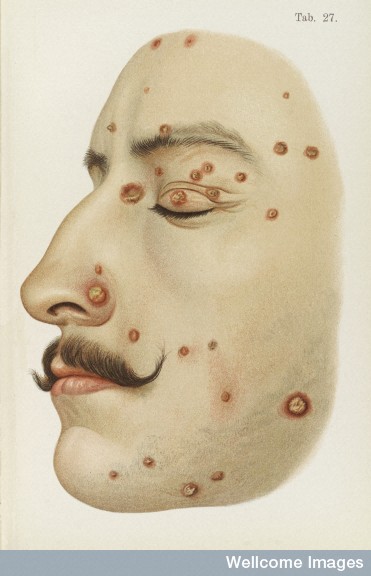Syphilis. The word conjures the worst of fears--along with a set of relatively unpleasant images! Caused by the bacterium Treponema pallidum, syphilis has four stages:
primary (wherein a single sore, or chancre, appears),
secondary (characterized by skin rash and lesions of mucous membranes),
latent stage (when symptoms disappear) and
late stage (wherein the disease attacks the nervous system and internal organs).
It affected the hair and nails, mucous membranes, tongue, larynx, abdomen, arteries, muscles, eyes and ears, nerves and--of course--the brain. Syphilis was dangerous in part because it could go "underground" in a sense, and people who looked perfectly healthy might yet have the...
Blog
Did you ever wonder where the stethoscope got its start? Or the ancestry of the blood-pressure cuff? We have a tendency to take diagnostic instruments for granted--but like every other medical tech invention, they developed and changed over time. Join us for a look backward, a chance to reflect not only on the practical progress of instruments, but on the awe-struck and childlike wonder with which the earliest practitioners listened in on the beating heart or the whisper-thrush of circulating blood!
On November 14 we will mark the completion of the M. Donald Blaufox Hall of Diagnostic Instruments with a...
In the spring, we ran a series of posts on Dr. William Smellie's "birthing machine," the obstetrical manikin he built to train man-midwives in the 18th century. The bizarre history of this--now vanished--device has always captivated me. How did it work? Where did it go?
And why was it called a "machine" at all?
William Smellie called the device a machine, possibly because mechanical automations of various sorts gained popularity in the eighteenth century. It was a way to set aside his "instrumental" engineering from the manikins of other teachers (including those used by women midwives). What on earth would that...
______________________________ "Dr. Auzoux's papier-mâché models" Whipple Collection, University of Cambridge: http://www.hps.cam.ac.uk/whipple/explore/models/drauzouxsmodels/




